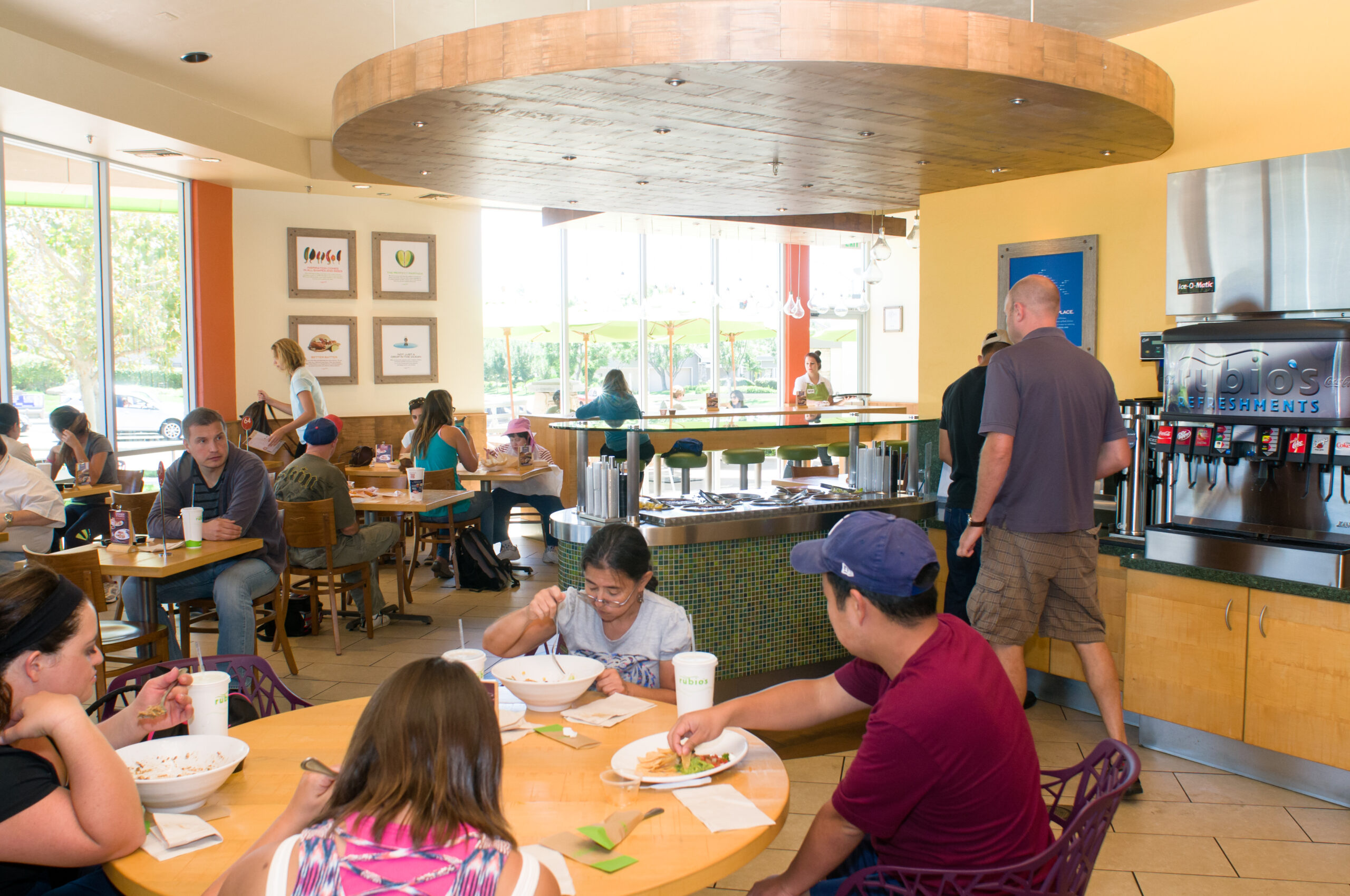Rubio’s Restaurants is reeling in a big catch with its suitability-focused redesign. The San Diego–based fast casual, known for its seafood and coastal cuisine, is in the process of updating 60 of its West Coast units and seeing notable sales increases in renovated units.
“We will have completed 18 units by the end of this year,” says Rubio's CEO Marc Simon. “The increase in comp. sales has been significant—we’ve had double-digit comp. sale increases in all but one of the units we’ve remodeled, and there’s a particular competitive challenge in that one unit.”
Simon says the ROI in updated units has reached as high as 20 percent, a sure sign the brand is doing something right. Over the past few years, Rubio’s undertook a project to update its menu items, introducing new grilled fish dishes and several salads. But Simon and the Rubio’s team realized the new, sophisticated menu didn’t quite match with the existing environment, and they brought in U.K. designer and consultant Adrian Kilby, who worked on branding for Pret A Manger, to spruce up the place.
“A significant challenge we faced was how [to] introduce a new design aesthetic but not use the core element of the brand, which has proven to be successful over 30 years,” Simon says.
The new design features bright green seating accents inside and out, and a pale yellow interior offset by light-colored wood. New lighting fixtures, floors, and ceilings complete the redesign. Simon says the biggest attraction of the new design is what he calls “providence panels.”
“We believe sustainability and understanding the providence of food is an important element of what makes Rubio’s special, and these providence panels tell the story of our food and cooking techniques, and tells our guests where their food comes from,” he says, adding that 85 percent of the fish dishes served at Rubio’s feature a sustainable catch.
The Rubio’s team aims to complete the redesign of its 60 West Coast units by 2016 and will then tackle the remainder of its 190-plus restaurants.
“The ultimate test is if guests understand and are sparked by the work we’re doing,” Simon says. “The numbers suggest they are.”
By Tamara Omazic






